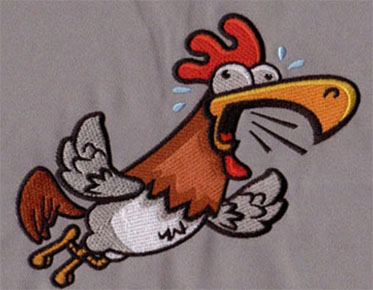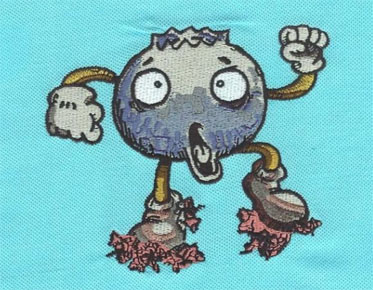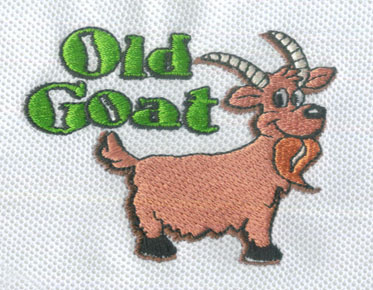Why Embroidery Underlay Stitching Is Essential for Your Custom Embroidery Designs
It is
important to use embroidery underlayment stitching in embroidery digitizing in your embroidery designs! By using this
tutorial you will learn how to do the right and best way of creating quality
embroidery.
One of the
basics is the bottom level. Many embroiderers don't use underlay stitching
because they don't know how to use it or which type of underlay to use for
their particular design, stitch type, or fabric style. Instead, they use high
density, and they think it will work, but it can cause a lot of problems.
Embroidery underlay stitching is the most important and underrated element in creating designs. Like anything else to build, you need a good base, and underlay stitching is the foundation of your embroidery designs. Many embroiderers are confused and want to know:
How can I
tell if I have any cushion stitching in my design?
What does
it look like
Underlay stitches
are stitches that are first sewn into the fabric before the topstitch is
actually sewn. If you're working with design files (.dst file extension), it
can be difficult to distinguish between basemaps and topstitching.
Sometimes
it will follow the same line as your embroidery, which can sometimes be weird
to you if you are new to embroidery and not familiar with the underlying
layers. This depends on the type of underlay stitching selected by the
digitizer.
There are 6
basic functions in the embroidery backing seam.
It attaches
the garment to the backing, creating a stable surface and smooth platform for
topstitching.
It helps
reduce yield in the fabric.
It hides
the color of the fabric that will be covered by stitching.
It helps
reduce the density of top seams.
It prevents
fabric from wrinkling.
It prevents
the stitches from sinking into the fabric.
What are
the Different Types of Embroidery Backing Seams?
There are 3
different stitch types that can be used to create underlay in your embroidery
designs.
Needle
running
zigzag
stitch
Underlay or
tatami sutures
These 3
different stitch types make up the 5 basic types of cushion stitches. These can
be applied manually if you are digitizing your own designs, or automatically if
you have this capability in your software. Sometimes the same effect cannot be
achieved using the automatic features in the software, so you need to know how
to apply different types of effects manually in order to get the exact effect
you want.
The basic
embroidery backing seam types are as follows:
Outline or
Edge Walk - This will create running stitches along the edge of the letter or
segment you are creating. It is also known as edge walking stitch. This type of
underlay is used to create flipped edges for your fonts or objects.
Vertical or
Center Walk – This underlayment runs down the center of the column. It is also
known as a center run floor mat. Use this underlayment when you have a very
narrow letter or column, less than 1.5m wide. For this you will only use 1 line
or the bottom layer through the center. This floor mat is great to use in
conjunction with contour or edge walks when you have wider posts and need a little
extra to lift them up.
Parallel -
This underlay is created using a zig zag or running stitch. It only goes down a
column once. In some software programs, it's called a zigzag bottom layer. This
can be used with lightweight terry or wool.
Zigzag – This
type of underlay is the same as parallel except it has twice as many stitches.
It runs down the post and then up the post, producing twice as many stitches as
parallel lines. In some programs, this is called a double zigzag. This is a
better alternative to French terry and piqué. You may wish to increase the
density of the zigzag underlayment to give your topstitches a puff or rounded
look.
Plaid or
Tatami – This underlayment is a low density fill stitch and is used underneath
complex fill stitches or tatami stitches, depending on which embroidery design
program you are using. Plaid is often combined with an outline or edge walk
underlayment use. It runs at a 45 or 90 degree angle to the top stitch in a
lattice pattern. It helps reduce fabric pulling up when sewing and keeps the
seams looking nice, especially if you're adding borders. This will help keep
the border in place.
Full lattice or double tatami stitches in two directions for a full lattice effect. This is a great option if you're using a heavy contrasting thread or fabric color, such as white thread on top of a black garment. This will hide the color of the fabric.
Few designs
or letters, even small ones, are acceptable without padding. Of course, there
are always situations that change this rule. If you're working with a very
light fabric, such as a wedding dress, and you're using a tone-on-tone, you
probably don't want any padding in certain areas, especially if you're going to
see through the stitching. For this type of embroidery you won't be using any
padding at all, but you have to be careful not to have too long a stitch length
as it will pull up and your garment will wrinkle.



